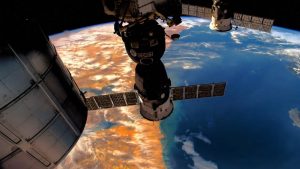International Space Station: Research purposes:

On June 3, NASA will send 128 glow-in-the-dark baby squids and some 5,000 tardigrades (also called water bears) to the International Space Station for research purposes.
- The water animals, which will be launched aboard SpaceX’s 22nd cargo resupply mission to the ISS, are part of experiments that could help scientists design improved protective measures for astronauts going on long-duration space travel.
- One of these studies involves looking at how the water bears– tiny animals (around 1mm long) that can adapt to extreme conditions on Earth, including high pressure, temperature, and radiation– would behave in a spaceflight environment.
- Scientists also want to look at how microgravity conditions affect the relationship between the bobtail squid –which are also tiny (3 mm long)– and beneficial microbes, as part of a study called UMAMI, short for Understanding of Microgravity on Animal-Microbe Interactions.
- The International Space Station (ISS) has been in space since 1998 and has been known for the exemplary cooperation between the five participating space agencies that run it: NASA (United States), Roscosmos (Russia), JAXA (Japan), ESA (Europe), and CSA (Canada).




